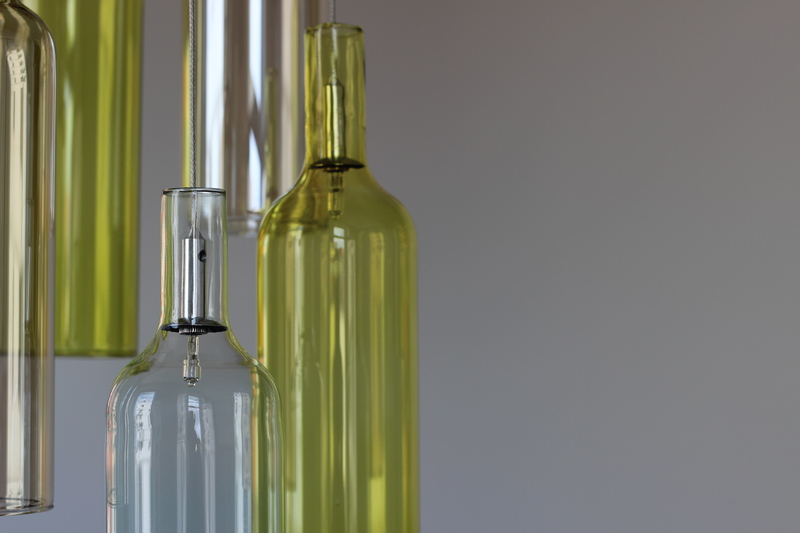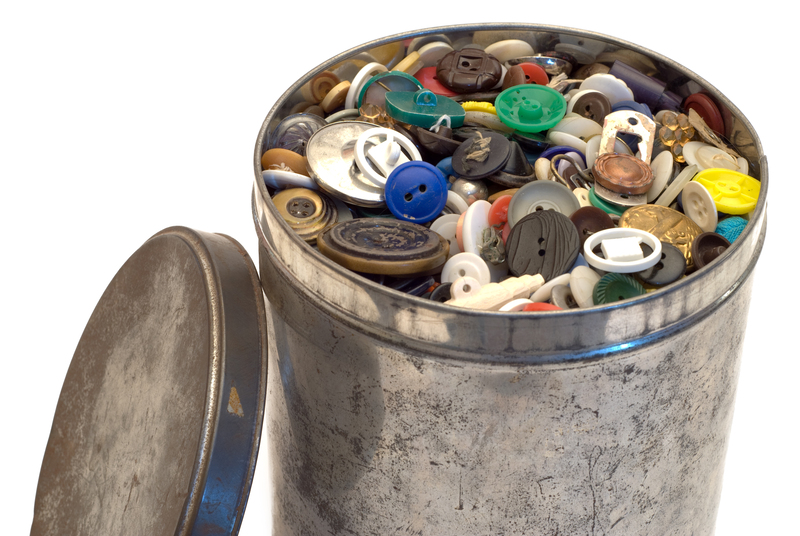Step-by-Step Instructions for Recycling Kitchen Cookware
Are you looking to recycle kitchen cookware the correct way? Whether it's an old frying pan, battered pots, or unusable utensils, properly sorting and recycling your cookware is essential to reduce landfill waste and preserve natural resources. This comprehensive guide offers detailed step-by-step instructions for recycling various kitchen cookware items, with helpful tips for eco-friendly disposal.
Why Recycling Old Cookware Matters
Every year, millions of pots, pans, and kitchen utensils end up in landfills, contributing to pollution and resource depletion. Recycling your kitchen cookware not only keeps harmful materials out of the environment but also helps reclaim metals and other resources that can be reused in new products.
- Metal recovery: Most cookware contains valuable metals like aluminum and stainless steel.
- Reduced landfill waste: Recycling reduces the volume of garbage dumped in landfills.
- Conservation of resources: Eco-friendly disposal helps protect depleted mineral resources.
- Community impact: Responsible recycling sets a positive example and benefits the local environment.

Types of Kitchen Cookware Suitable for Recycling
Not all kitchen cookware is the same; some are straightforward to recycle, while others need special handling. Here's a breakdown:
- Metal Cookware: Frying pans, saucepans, baking sheets, mixing bowls, stockpots (made from stainless steel, cast iron, aluminum, copper).
- Nonstick Cookware: Teflon-coated pans and pots.
- Ceramic and Glass Cookware: Baking dishes, casserole dishes, pie plates (Pyrex and more).
- Plastic Kitchenware: Measuring cups, spatulas, ladles, storage containers (check recycling codes).
- Silicone Cookware: Baking mats, muffin pans, spatulas.
*Note: Some items, such as nonstick coated pans or broken ceramics, may require special preparation before recycling.
Step-by-Step Guide for Recycling Kitchen Cookware
Step 1: Sort Your Kitchen Cookware
Begin by gathering your old cookware and sorting it according to material. Sheet pans, cast iron skillets, plastic items, and glassware must all be separated.
- Metal only: Place all stainless steel, aluminum, copper, and cast iron items together.
- Nonstick cookware: Keep pans with nonstick coatings separate, as they are recycled differently.
- Ceramic and glassware: Place in a distinct group since not all community recycling centers accept these materials.
Step 2: Check Local Recycling Guidelines
Every city has its own rules for recycling kitchenware. Visit your local recycling authority website or call their hotline. Some locations organize special events for scrap metal, e-waste, or specialty items.
- Identify which types of cookware are accepted curbside.
- Find the nearest recycling drop-off facility for metals, glass, and ceramics.
- Note any special recycling days or hazardous waste collection events.
Step 3: Clean and Prepare the Cookware
Before dropping off your old kitchen cookware at recycling centers, ensure all items are clean. Food residue can contaminate recycling streams.
- Wash thoroughly to remove oils, sauces, and baked-on debris.
- For metal pans: Scrape any burnt residue and rinse out grease thoroughly.
- Remove all plastic, silicone, or wood handles if they can be detached (check with the recycling center if unsure).
Step 4: Handle Nonstick and Specialty Cookware
Nonstick (Teflon-coated) pans require special attention:
- Teflon-coated cookware: Some facilities accept these only if you remove the coating--confirm with your recycling center.
- If not accepted curbside, look for a metal scrap dealer who can handle nonstick cookware.
- If your pan is very old (pre-2013), it may contain PFOA. Contact hazardous waste facilities for safe disposal.
Step 5: Deliver Cookware to Appropriate Facilities
Take sorted and prepared kitchen cookware for recycling to the correct location:
- Scrap metal yards: Metal pots and pans are usually accepted, along with aluminum and copper.
- Household recycling centers: Some accept uncontaminated glass or ceramic bakeware. Double-check accepted items first.
- Curbside collection: In rare cases, clean metal pots or pans may be accepted if your municipal program allows.
- Retail take-back programs: Some major chains offer cookware recycling programs or donations.
Step 6: Consider Donating Usable Cookware
Before throwing anything away, ask yourself: could someone else use these old pots and pans? If your cookware is still functional, consider donating instead of recycling:
- Local thrift stores or charities
- Homeless shelters, soup kitchens, or community kitchens
- Schools, daycare centers, or college dorms
Donating extends the lifespan of your cookware and benefits people in need.
Special Tips for Recycling Different Cookware Materials
Metal Pots and Pans
Stainless steel, aluminum, and copper pots and pans are highly recyclable and welcomed by most scrap metal yards.
- Remove non-metal parts like plastic handles, silicone grips, or glass lids if possible.
- Some facilities pay for scrap metal by weight — inquire before dropping off your cookware.
Cast Iron Cookware
Due to its weight and purity, cast iron is especially valuable for recycling.
- Rusted or damaged skillets are acceptable.
- Scrap yards will melt down the iron for repurposing.
- If the pan is still usable, consider donating or restoring.
Nonstick Cookware
Recycling nonstick cookware is trickier due to chemical coatings. Generally:
- Contact your local recycling facility for their specific policy on Teflon or ceramic-coated pans.
- Some centers require you to file off or sand away the coating first, separating it from the metal base.
- If the nonstick layer cannot be separated, treat as landfill or consult hazardous waste guidelines.
Glass and Ceramic Bakeware
Most curbside recycling programs do not accept Pyrex, tempered glass, or ceramic bakeware due to their high melting point.
- Search for specialty recycling events accepting ceramics or "hard-to-recycle" household goods.
- Offer damaged or chipped items to local artists or DIY upcycling groups.
- Always check your city’s accepted list before putting these in the recycling bin.
Plastic and Silicone Kitchenware
Some plastics are recyclable if they feature the recycling code #1 or #2; others must go in the trash.
- Check the recycling symbol, usually found on the bottom of the item.
- Recycle plastic items curbside only if your program explicitly accepts them.
- Silicone kitchenware is rarely recycled municipally but may occasionally be accepted by specialty recyclers.
Upcycling and Creative Reuse Ideas for Old Cookware
Before discarding your unwanted kitchen cookware, consider creative ways to give it a second life. Upcycling reduces waste and can produce functional or decorative keepsakes.
- Turn old pots into planters for your herb garden.
- Transform skillets into wall art or rustic clocks.
- Use muffin tins as drawer organizers for small office supplies or jewelry.
- Convert baking sheets into magnetic boards for kitchens or workshops.
Common Mistakes to Avoid When Recycling Kitchen Cookware
- Throwing cookware in regular recycling bins: Most curbside programs do not accept cookware – always confirm first.
- Leaving food residue: Dirty pans may contaminate other recyclables.
- Ignoring local guidelines: Regulations vary widely by city and state.
- Mixing materials: Always separate metal, glass, ceramic, and plastic.

Frequently Asked Questions about Kitchen Cookware Recycling
Can I recycle my cookware curbside?
Generally, no. Most municipal curbside programs do not accept bulky kitchenware. Only place items in curbside bins if your city has specified that it accepts those types of items.
Is it safe to recycle nonstick pans?
Nonstick pans are usually not accepted curbside. Contact your local scrap yard or hazardous waste management facility for instructions on recycling coated cookware.
Can glass cookware like Pyrex go in the glass recycling bin?
No. Tempered or heat-resistant glass has a different melting point and can damage standard glass recycling batches. Take them to specialty recycling drop-offs if available or find upcycling options.
What happens to recycled metal cookware?
Recycled metal is shredded, melted down, and purified. It is then sold to manufacturers who turn it into new products, such as appliances, construction materials, or even new cookware.
Conclusion: Embrace Responsible Kitchen Cookware Recycling
Learning how to responsibly recycle your kitchen cookware is a simple yet impactful step toward a greener household. By following these step-by-step instructions for cookware recycling, you protect the environment, reduce waste, and may even inspire friends and neighbors to join you in eco-friendly living.
- Always check and follow your local recycling guidelines.
- Prepare and clean your cookware before recycling or donating.
- Explore creative ways to upcycle or donate usable items first.
Stay informed and proactive — together, we can ensure our kitchen cookware recycling efforts make a positive impact on our communities and the planet.
Looking for more tips on sustainable kitchen practices? Subscribe to our newsletter and join the eco-friendly movement today!
